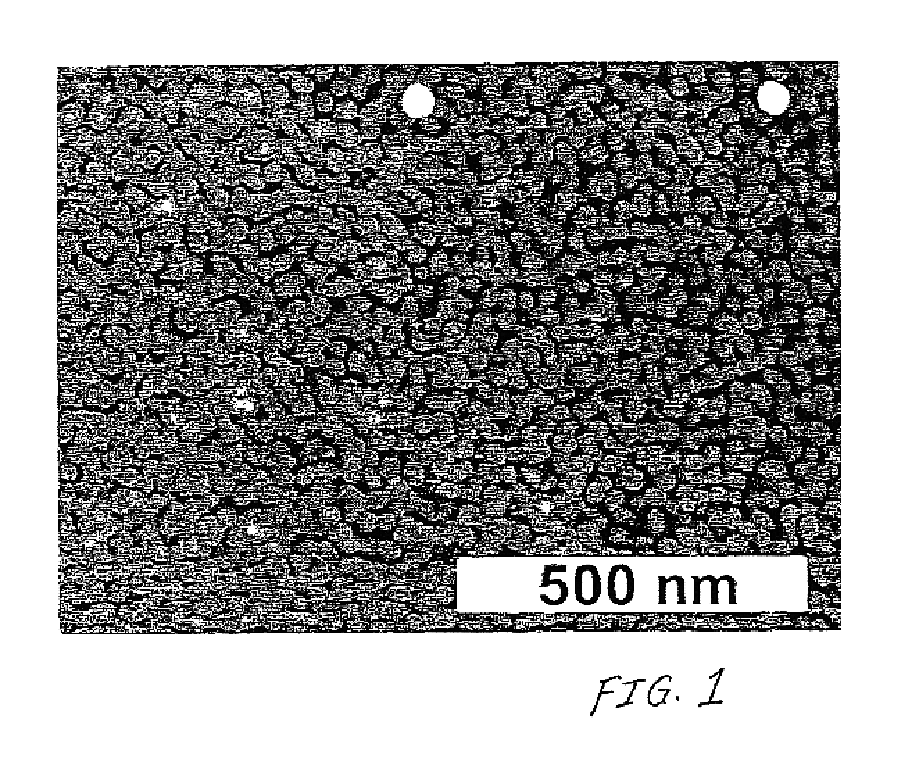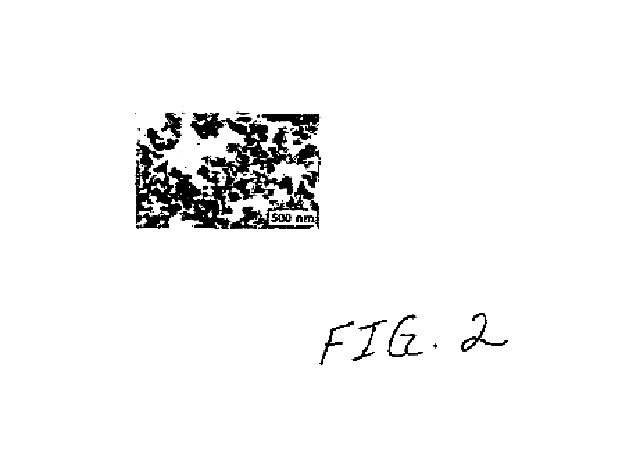Method of producing aluminum oxides and products obtained on the basis thereof
a technology of aluminum oxide and aluminum oxide, applied in the field of aluminum oxide and products obtained on the basis thereof, can solve the problems of difficult quantitative exact detection by x-ray diffraction, and achieve the effect of convenient handling
- Summary
- Abstract
- Description
- Claims
- Application Information
AI Technical Summary
Benefits of technology
Problems solved by technology
Method used
Image
Examples
example 1
All experiments described here omit the use of chlorine-containing precursor starting materials.
Example 1 describes the production of powder form nanocorundum from an inorganic precursor and with use of diaspore nuclei. 5.1 g diaspore crystals (<0.1 μm) were dispersed in 1000 ml of a one-molar aqueous aluminum nitrate solution (pH<2). After heating to 75° C., an ammonia solution was added for the hydrolysis of the aluminum compound, until a mole ratio [NH4OH] / Al3+]=2.5 was reached; in doing so, the pH increased to 4.5. After three days of ageing, the nuclei-containing sol was freeze-dried and the dry substance calcined in an electric oven in air for 1 hour at 850° C. The powder yield was 150 g in this experiment, and distinguishes the process clearly from syntheses described in the literature, which yield only the smallest quantities.
The x-ray diffraction diagram of the nanocorundum powder formed in this way shows a corundum content between 90 and 100% (more accurate state...
example 2
For the sol / gel production of a nanoporous amorphous Al2O3 sintered product with average pore size <2.5 nm, 0.1 mole al-sec-butoxide (ASB) were first complexed with 0.1 mole ethylacetone acetate (EtAc) and subsequently dissolved in 0.5 mole isopropanol. For the purpose of hydrolysis, a mixture of 0.3 mole water and 0.5 mole isopropanol was added to this organic precursor solution drop by drop, so that the mole ratio ASB:H2O reached a value of 1:3. The mixture produced in this way was stirred for 2 hours at room temperature, this was followed by an aging of a further 2 hours at 95° C. with continued stirring.
The sol formed was deposited by dip coating on a porous substrate of α-Al2O3. The infiltration of the sol in the upper layers of the substrate is combined with a graduated change in the solids content and triggers the transition into the gel state. After drying and calcination in air, filtration membranes of the following structure resulted (the porosity measurement was made...
example 3
For the sol / gel production of porous Al2O3 sintered products that with a phase composition of more than 80% corundum (α-Al2O3) feature average pore sizes between 10 and 100 nm, 0.1 mole al-sec-butoxide (ASB) were first complexed with 0.1 mole ethylacetone acetate (EtAc) and subsequently dissolved in 1 mole isopropanol. For the purpose of hydrolysis, this organic precursor solution was added drop by drop at room temperature to an aqueous suspension of diaspore nuclei (<0.1 μm) acidified with HNO3; the amount of the diaspore nuclei amounted to 10% by weight, relative to the ultimately synthesized Al2O3 product, the mole ratio H2O:HNO3 was 100:0.1. The drop by drop addition of the precursor solution to the aqueous suspension of diaspore nuclei took place until a mole ratio of ASB:H2O=1:100 was achieved. The mixture produced in this way was stirred for 2 hours at room temperature, this was followed by an aging for a further 2 hours at 95° C. with continued stirring.
The sol formed s...
PUM
| Property | Measurement | Unit |
|---|---|---|
| mole ratio | aaaaa | aaaaa |
| temperatures | aaaaa | aaaaa |
| temperatures | aaaaa | aaaaa |
Abstract
Description
Claims
Application Information
 Login to View More
Login to View More - R&D
- Intellectual Property
- Life Sciences
- Materials
- Tech Scout
- Unparalleled Data Quality
- Higher Quality Content
- 60% Fewer Hallucinations
Browse by: Latest US Patents, China's latest patents, Technical Efficacy Thesaurus, Application Domain, Technology Topic, Popular Technical Reports.
© 2025 PatSnap. All rights reserved.Legal|Privacy policy|Modern Slavery Act Transparency Statement|Sitemap|About US| Contact US: help@patsnap.com


